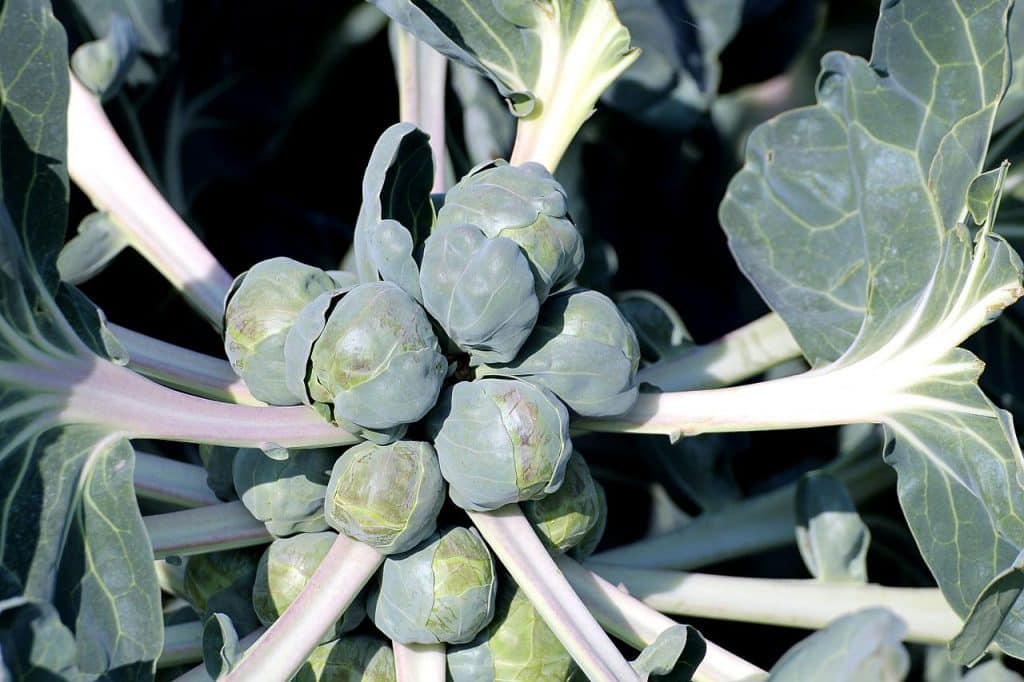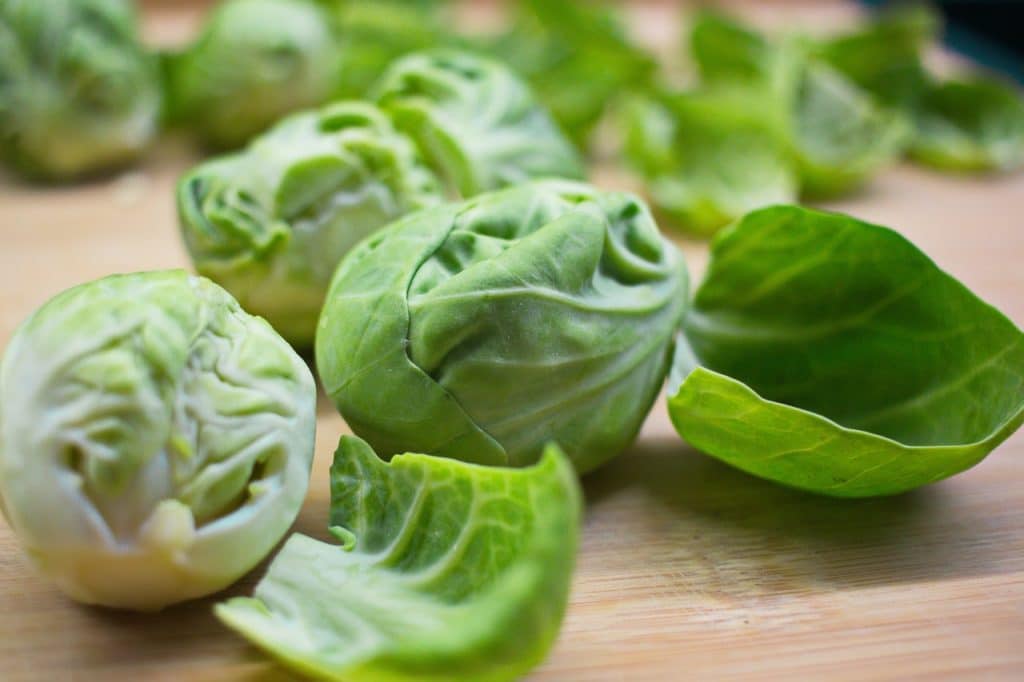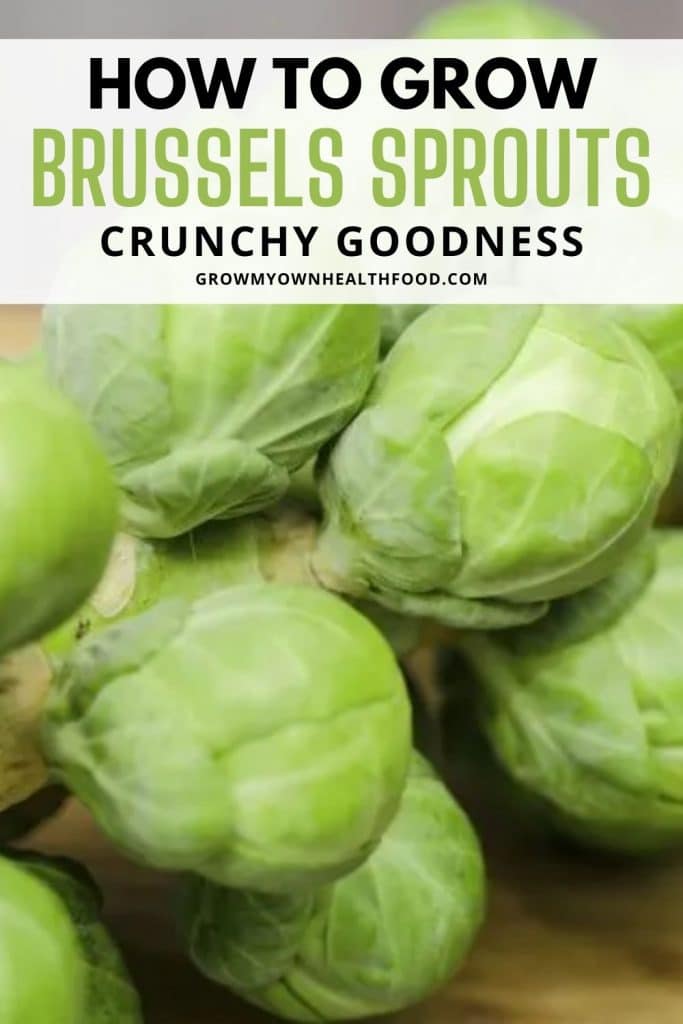If you love your greens, then you must be familiar with Brussels sprouts. Belonging to the cabbage family, Brussels sprouts are rich in nutrients. You may see Brussels sprouts in the grocery stores but finding these veggies in a home garden might be a rare sight. The reason is that this vegetable is not the easiest to grow. However, that does not mean that this is an impossible feat! The bigger the challenge, the more rewarding it will be! So, are you up for the task? By the end of this article, you will have enough information to successfully grow Brussels sprouts by yourself!
Varieties of Brussels Sprouts to Grow
Before growing Brussels sprouts, you should be aware of their different varieties. Once you know enough about them, you can choose the right variety according to what suits you. Here are some of the well knows varieties of Brussels sprouts.
- Jade cross is known to be resistant to many diseases and is more tolerant of hot weather.
- The variety Churchill can be adapted in various climates and also matures early.
- The variety diablo is known to produce more sprouts than others.
Things You Need to Know About Growing Brussels Sprouts

Here are some important FAQs about growing Brussels sprouts!
- Brussels sprouts are grown in regions with cool climates. If the temperature rises above 70 degrees F then you may not get any sprouts at all.
- A brief bout of frost can even improve the flavor of sprouts.
- They need a growing season of 80 to 100 days.
- The plants need a lot of water during summers.
- The soil needs to be moist but not soaked in water. A great way to test if the soil is not soggy is by taking a handful of soil and making a ball in your hands. If the soil crumbles then it has the right levels of moisture.
- Brussels sprouts have a shallow root system which is why the soil around them should not be disturbed.
- This plant needs to be grown in full sun.
Planting Brussel Sprout Seeds
- Brassica oleracea - non-gmo, open-pollinated, heirloom, untreated
- The most well known compact Brussels sprout with very heavy yields!
- A workhorse variety that produces very flavorful sprouts. Each compact, 24″ tall plant yields around 75-100 dark green, 1-2″ sprouts over a long peri
Prices pulled from the Amazon Product Advertising API on:
Product prices and availability are accurate as of the date/time indicated and are subject to change. Any price and availability information displayed on [relevant Amazon Site(s), as applicable] at the time of purchase will apply to the purchase of this product.
Brussels sprouts grow easily from the seeds as they are reliable germinators. If you do not wish to plant seeds, you can always find seedlings in a garden center or nursery.
Brussels sprouts prefer colder climates which is why you should always plant the seeds according to your region’s climate. For example, if you are living in a place where the temperature often falls below zero, you need to plant the seeds in early to mid-summer. This way the Brussels sprouts will be ready to harvest by fall or early winter. In regions where the winter season is mild, you should plant the seeds in mid to late summers. An easy way to find the correct time for planting Brussels sprouts is to do it 4 months before the first fall frost date in your region.
How to Plant Brussel Sprouts
- SEED STARTER KIT -- Pack of 60 peat pots. Each pot measures 3 inch in diameter. Comes with 15 pcs plant labels, and you can use them to mark the seeds in your peat pots.
- START INDOOR GARDEN -- Starting an indoor garden is easy with our bulk pack of organic peat pots. Simply place your seeds into the seedling transplant pot.
- 100% BIODEGRADABLE -- Once the seeds sprout, just transplant the whole pots directly into the ground or larger plant pots. These will break down in the soil in the end, environmentally friendly.
Prices pulled from the Amazon Product Advertising API on:
Product prices and availability are accurate as of the date/time indicated and are subject to change. Any price and availability information displayed on [relevant Amazon Site(s), as applicable] at the time of purchase will apply to the purchase of this product.
You can plant the seeds directly in your garden or indoors in peat pots. However, we recommend indoor planting as the seeds will be protected from pests and summer heat. If you are growing Brussels sprouts indoors, another product you can use is a grow light. Sow the Brussels sprouts seeds half-inch into the soil. After the seedlings begin to emerge, you can slowly acclimatize them and transplant them into your garden. One thing you should keep in mind is to generously water the plant while transplanting it. If you are sowing the seeds directly in your garden, then plant the seeds a few inches apart from each other. However, if you are transplanting seedlings then they should be 15 to 19 inches apart. While transplanting the plant outdoors, it is important that the transplant sits in the soil at the same height as it was in the previous container.
Before you plant your seeds, you should add compost to the soil to create a welcoming environment for the seed to grow in. The compost will improve water retention and drainage; two factors that are very important for the healthy growth of a plant. Brussels sprouts prefer fertile soil which is why it is always a good idea to add in lots of organic matter as well.
- Grows Plants Twice as Big (vs. unfed plants)
- Feeds up to 6 months
- More blooms for more color (vs. unfed plants)
Prices pulled from the Amazon Product Advertising API on:
Product prices and availability are accurate as of the date/time indicated and are subject to change. Any price and availability information displayed on [relevant Amazon Site(s), as applicable] at the time of purchase will apply to the purchase of this product.
Growing Brussels Sprouts
Once your plant is 6 to 7 inches tall, you should start thinning it while also adding nitrogen-rich fertilizers to the soil. Adding mulch is another great way to keep the soil temperatures cool. If you are growing sprouts in hot weather, you should be careful to water them regularly. Insufficient water can result in unsatisfactory results. If you notice any yellow leaves at the bottom, remove them so more sunlight reaches the plant.
- STRONGER ROOT DEVELOPMENT: Bone Meal is a natural source of vital, readily available organic nitrogen, phosphorus and calcium.
- ADD TO SOIL: Add to soil or potting mix during seed starting or at any time prior to harvest to fuel strong roots and early, healthy plant growth.
- ORGANIC CERTIFIED: OMRI listed for organic gardening, Bone Meal is ideal for new bedding plants.
Prices pulled from the Amazon Product Advertising API on:
Product prices and availability are accurate as of the date/time indicated and are subject to change. Any price and availability information displayed on [relevant Amazon Site(s), as applicable] at the time of purchase will apply to the purchase of this product.
Looking Out for the Pests
Like other plants, Brussels sprouts are also at risk from pests and diseases. From fungus to insects, there are a few things you should know when it comes to protecting your Brussels sprouts.
Insects like aphids, cabbage loopers, maggots, worms, and flea beetles can cause serious damage to Brussels sprouts. Row covers can be used to protect Brussels sprouts from such pests. Another way to keep your plant safe is to grow companion plants with it. Native plants are often beneficial when it comes to keeping the pests away.
Here are some of the symptoms you should look out for in the plant.
- Ragged holes in leaves, whether large or tiny.
- Wilted or discolored leaves.
- Roots appear to be distorted.
- Water-soaked areas on the stem.
- Sticky excrement.
If you notice signs like these in your plants, it means that your plants have become a victim of fungus or pesticides. In cases like these, there is still a chance to save your plant. Take note of the symptoms and then you can tackle the problem accordingly.
Time for Sprout Harvesting!

A month before harvesting your brussel sprouts, cut off the top leaves as it encourages the plants to mature faster. You should harvest Brussels sprouts from the bottom as they mature from the bottom in an upwards direction. If you want to pull the entire stock after a frost, do so by removing the leaves first. You can then hang it in a dry cool place such as a basement. After harvesting, you can store Brussels sprouts in a plastic bag for 4 to 5 days in a refrigerator. Remember to only wash the sprouts right before use. Brussels sprouts are usually harvested after the frost. These are also among those few plants that may actually need a light frost for their taste enhancement. A great benefit of growing Brussels sprouts in your home is that you will be able to pluck fresh sprouts. These Brussels sprouts will taste better than any sprouts you will ever get from a local market. Moreover, you can also utilize the leaves of Brussels sprouts in different recipes. While growing Brussels sprouts may not be an easy journey, it definitely will be worth it!











